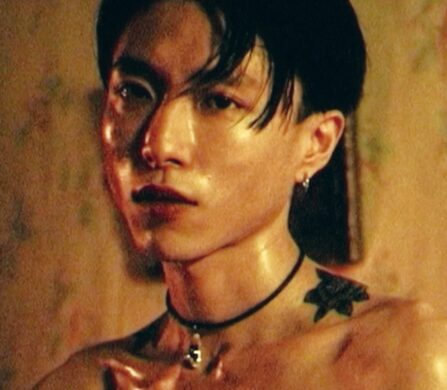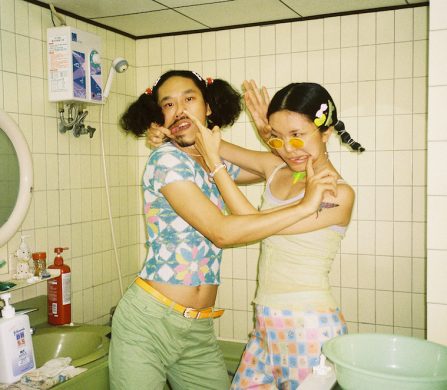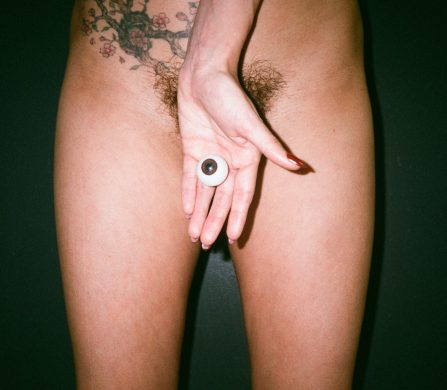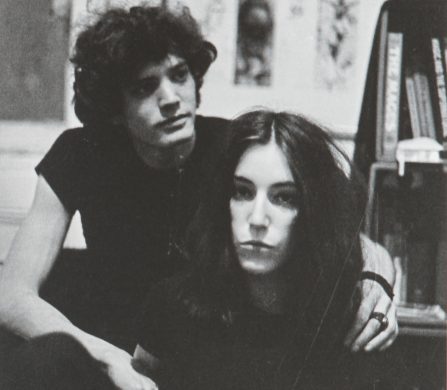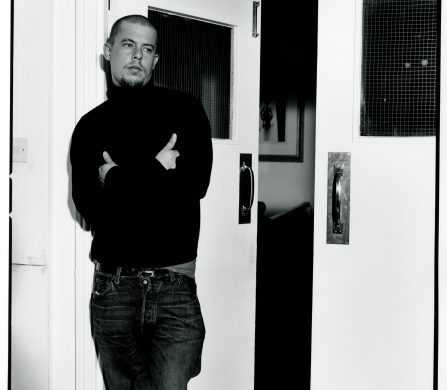
Unlocking the Locket, 2017 (Somewhere Under The Rainbow) © memymom
When Marilène Coolens started photographing her then five-year-old dress-up-loving and precocious daughter Lisa in the ’90s, neither of them could have imagined in which direction their leisure activity would take them. The quality, appeal and multiple layers of their creative output were such that, in hindsight, Marilène decided to publish an analogue archive of their photography in the early ’00s. Not so many years later, their artistic moniker, memymom, was born, and the mother-daughter duo not only continued to direct their candidly idiosyncratic lens at their evolving mother-daughter relationship but also at their newly-entered dialogue with the bewildering digital revolution.
The self-taught Bruxelles-based artists’ illustrious beginnings have since earned them prominence at exhibitions across Belgium, Spain, Germany and Slovakia, with a retrospective exhibition at Le Musée de la Photographie in Charleroi, Belgium, opening today. Having capitalised mainly on narrative-driven photography, the artistic duo is becoming more and more interested in the potential of film to breathe life and context into images, and they have started laying their hands at short films as well. If there is one aspect their creative practice has stayed loyal to ever since its inception, it’s the artists’ self-confessed debt to intuition on which “everything that [they] do is based.” Here, we chat with memymom about the notion of life as art, their upcoming chapter dubbed ‘The Fourth Hatch’, and the symbiotic flow of their practice.

Nothing is What it Seems, 1993 (The Umbilical Vein) © memymom
opposite
The Misfit, 1996 (The Umbilical Vein) © memymom
Your upcoming exhibition is a kind of retrospective looking at works from across your entire career so far. Is there an overarching narrative you want to tell? And if so, why?
Lisa: For me, there’s a feeling we need to express. In our images, we always show how we see the world and most of our images are multi-layered, especially in our third chapter ‘Somewhere Under The Rainbow’ that started in 2016. We started focusing on the times that are a-changing, hence the title. We indirectly document our lives and what happens around us in semi-staged images. There’s also the overarching aspect where you see Marilène and me communicating with each other throughout our images. For example, our last road trip in California, we did not have a specific plan, just a car and a suitcase full of clothes that we wanted to use. From there on, we just improvise. We react to the places we visit, the sensations we have and that shapes the narratives in the moment. We just want to tell our story, express our thoughts, for ourselves in the first place.
Marilène: It’s all about intuition, which automatically streamlines the story. All that we do is based on intuition and we end where we start, it’s our story.
Your leap into photography as art, as it were, came serendipitously. How do you feel about turning your life into art?
L: Great, intense, but not always easy… nonetheless, for me, it’s the only way of life, where it all makes sense.
M: It’s not easy to be part of society or to define who you are as a member of society. Basically, you mean nothing, but you want to mean something. I don’t necessary define what we do as art – in a manner of speaking. We have a medium through which we can explain all the things that come at us. But it’s also about beauty, because your life can not be ‘art’ all the time… but, daily life also reproduces art.

top left. Gold Strike, 2017 (Somewhere Under The Rainbow) © memymom
top right. Escape from Vegas, 2017 (Somewhere Under The Rainbow) © memymom
bottom left. Looking for Nicolas, 2012 (The Digital Decade) © memymom
bottom right. Louise Gallery, 2016 (Somewhere Under The Rainbow) © memymom
Although both of you take turns standing behind the camera, most of the time it’s you, Marilène. And even in photographs such as ‘Portrait of Marilène’, we don’t really see you. Is that simply because you’ve got a better hand for photography? Or is that a commentary on maternal identity?
M: Certainly not a comment on maternal identity, it has nothing to do with that. It’s just the personal aspect of not liking to be photographed and to be in pictures. I’m not the extrovert type and that’s compensated with Lisa, who is. In that moment, it’s just Lisa who decides to photograph me.
L: It’s certainly not easy photographing Marilène, so I always try to find a way around that. In that image, I just reacted to the moment I wanted to photograph and she decided to go under the blanket and that becomes the portrait of Marilène. I can see and feel her from underneath that blanket, which is a most powerful sensation. It captures the way we are – how we let each other be and it also emphasises the humour we share.
Your photographs hoover between the spontaneous and the staged. You’ve previously mentioned that you draw a lot from the ’90s but where exactly does your interest in everyday theatricality come from?
M: I used to be a sports teacher and loved to encourage children to express themselves, as I did with my own children. I was also very inspired by everything that was around in the ’90s. Our inspiration also came forth from what Lisa and I did, it was a game. A game that came forth from culture, paintings, movies, you name it…
L: Yes, our parents did make sure that we had our portion of our culture when my brothers and me grew up. They introduced us to David Lynch through Twin Peaks, Cindy Sherman… and they took us on a most memorable trip to NYC back in the ’90s. They shared with us their interests, the things they were curious about and were in love with. That shapes your interests and feeds your need for expression. Our parents protected us, but did not keep us away from life itself. I remember once walking through the red light district in the city and asking my mom what that was all about, so she just simply explained it. A kid can understand a lot and draw its own conclusions, I think.
Your work is beautifully ambiguous: the viewer is often left asking, ‘Do photographs like “Real Wild Child” contribute to the over-sexualisation of young females or are they actually parodying that trend?’ What are your thoughts on that?
L: In the first place, they contribute to the essence of our mother-daughter collaboration and on how we saw the world. The images from our analogue image archive ‘The Umbilical Vein’ (1990 – 2003) were images that were solely made for ourselves back in the days, where I would play characters that I had seen in series, movies or in real life. Because I was none of them as a kid, but I was capable of playing them and just being them for a little while through that. They probably do parody some stereotypes that have been around for ages, but they mainly pay tribute to the iconic imagery I was so impressed with as a kid. When I had seen Tim Burton’s Catwoman, played by Michelle Pfeiffer, I was only 9-years-old and had made my own Catwoman suit and played my version of it. As writer Kurt Snoekx once described it best, as a viewer: “this work pays tribute to the games and creativity of children.”
M: When I see that image I just see the story. That blouse that Lisa’s wearing was one that I bought in a vintage shop in NYC where Iggy Pop used to go. So we named that image [after] one of his songs Real Wild Child. And probably Lisa was inspired by Madonna.

One for Currin, 2017 (Somewhere Under The Rainbow) © memymom
Your artistic moniker was born under the digital star and in your photos and films, we see selves organically triple. How do you think will the digitalisation continue to impact memymom?
M: The means that are being offered in the digital era are fun to explore, they offer a lot of possibilities when it comes down to creativity. It’s like a painter with a brush. I like working with all these means in an unconventional way. I don’t like to be dictated on how to use programs. We don’t use Photoshop to make people prettier, but to finish an image.
L: Thanks to Marilène, I stay updated on the digitalisation; she’s always the first to get ahead of things and try out new things and introduces me to that. I like playing around, but I don’t have the need to use every new digital hype, for it can easily become a trick or a a gimmick that does not necessarily offer a more interesting outcome. I just use the things that I need to tell a story.
You’ve done a couple of videos as well. Is there a marked difference for you between photography and video? Or is the latter a way to fill the gaps in an image, so to speak?
L: It’s a way of taking it a bit further, to explore the image and the narrative… to find that one image in all those frames.
M: For me, [it’s] to expand things, because you are able to. In a way, there’s no real difference for me when it comes down to photography and video. You just sometimes have an image and want that image to move.
Would filmic projects like feature films be something you’d be interested in doing in the future?
L: Absolutely, but the first thing I’d really love to make is a documentary on our life and work, which is something I hope to get done in 2021, when our 4th chapter takes off: ‘The Fourth Hatch’. This time I want to start with Marilène when she was a little girl and take things from there. I want to understand the possibilities of our story and eternalise the beauty of what we’ve been doing for years. It’s also necessary to see your story from a different angle sometimes to stay inspired. I think it’s a complex story to shape, but an interesting one where we can explore so many layers.

Real Wild Child, 1994 (The Umbilical Vein) © memymom
opposite
Bolly – The Baby Blues, 2014 (The Digital Decade) © memymom
A question to you, Lisa: as an artist, you’re always described in relation to your mother. Do you consider such a working relationship a blessing or somewhat limiting?
L: An absolute blessing. It’s the most fascinating thing to work with Marilène. I love her universe and her way of thinking and she’s much younger than me actually. With the two of us, we can take things so much further. We also have the advantage of the unconditional love and trust in our collaboration.
You, Lisa, have previously collaborated with other artists as well. Do you want to venture into similar collaborations in the future? And if so, alongside whom would you like to work?
L: We shot a video clip for singer songwriter La Jérôme (aka Christa Jerôme) and it’s wonderful to work with someone like Christa, she’s extremely talented and I can assure you: she can leave you speechless. Currently, that video is being finalised by Zoubeir Ben Hmouda. So in that sense, we want to expand our possibilities by working with other artists. And, in general, for all the other images we make that do not feature me or Marilène, we mostly ask other dancers or actors to embody the characters in our stories ever since our second chapter ‘The Digital Decade’ (2010 – 2015). They trigger us on a different level and that is enormously inspiring. One of our favourite artists to work with is dancer Carlijn Koppelmans, for example; she’s extremely talented and a perfect fit for memymom. But so is the actress Kim Ceysens and dancer Yumiko Funaya. It’s intense to feel the trust and believe they have in our ideas and creations and to have them be part of our universe moves me so much.

Den Deugniet, 2013 (The Digital Decade) © memymom
Can you tell us a little about what projects you’re working on currently?
L: We’re currently preparing another event that will take place at the famous art deco bar L’Archiduc in Brussels on October 25. We will be combining forces with singer songwriters La Jérôme, Kris Dane and Pascal N. Paulus. We will unveil a new exhibition of memymom, launch the videoclip of La Jérôme and Kris Dane will take the stage for new songs and thoughts. I just felt the sudden urge to join forces with other artists, certainly in these times where I keep repeating to myself: ‘Now, more than ever’.
M: We just finished our book (published by Ludion) and solo exhibition ‘memymom’ and within that, we’re also showing a preview from our last chapter ‘Somewhere Under The rainbow’. That’s a chapter that’s ongoing and where we are exploring the settings that the city of Brussels has to offer. So whenever we have an idea or sensation, we just start.
Last but not least, looking into the future, how do you think memymom will evolve? Are you looking to maintain your artistic collaboration long term?
L: I don’t ask myself that question. There’s this quote from Samuel Beckett that explains it best. When he was asked what the meaning was of his play Waiting for Godot he famously replied: ‘It’s all symbiosis… it’s symbiosis.” So for those who understand, I can only say the same: Symbiosis, baby… Symbiosis.
M: And I just follow…
Lisa De Boeck and Marilène Coolens’ ‘memymom‘ retrospective opens today at Le Musée de la Photographie. The exhibition will run until January 1, 2019.
words. Jenny Elisabeth Bär Keita
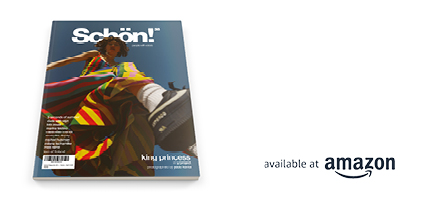
Schön! Magazine is now available in print at Amazon,
as ebook download + on any mobile device












